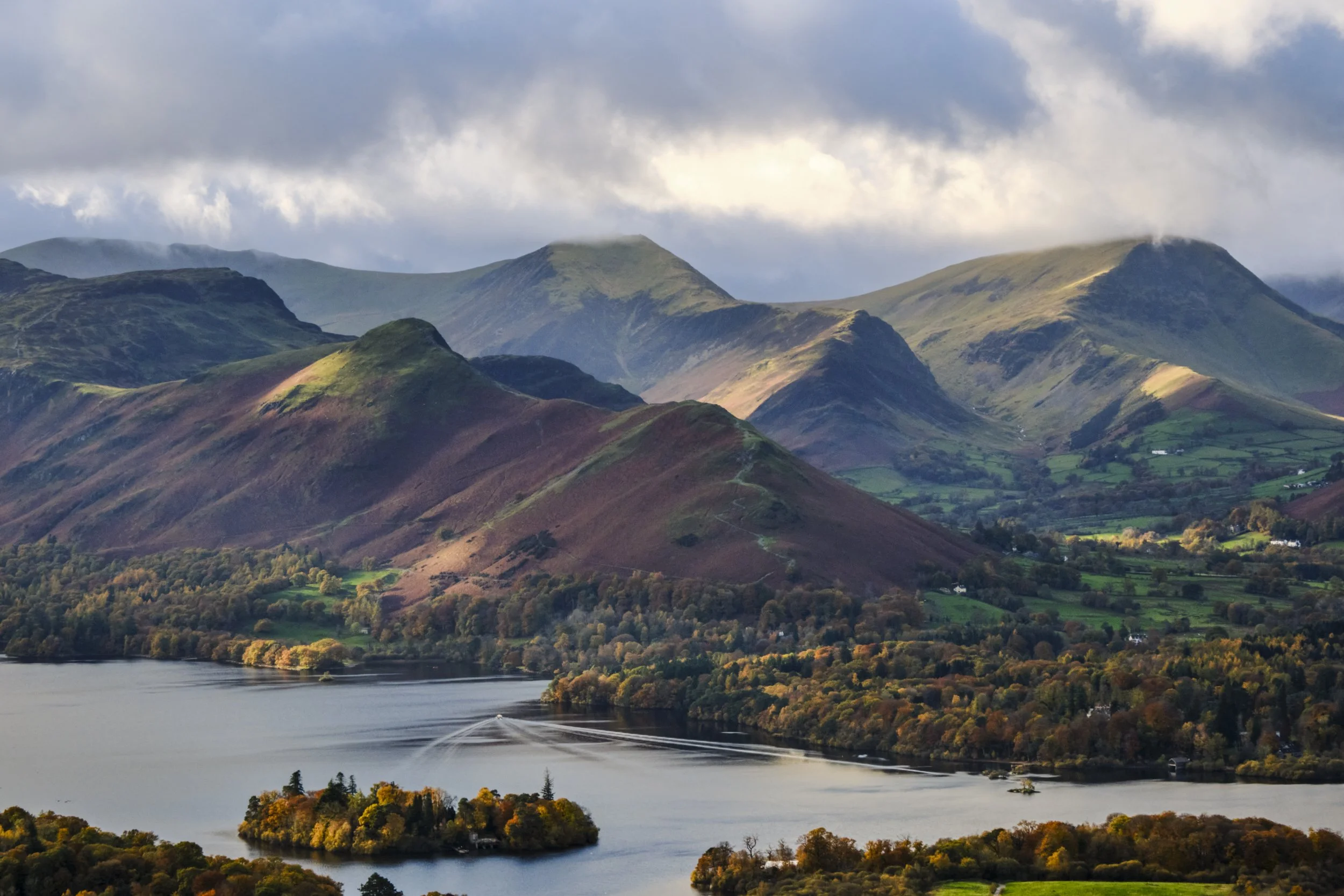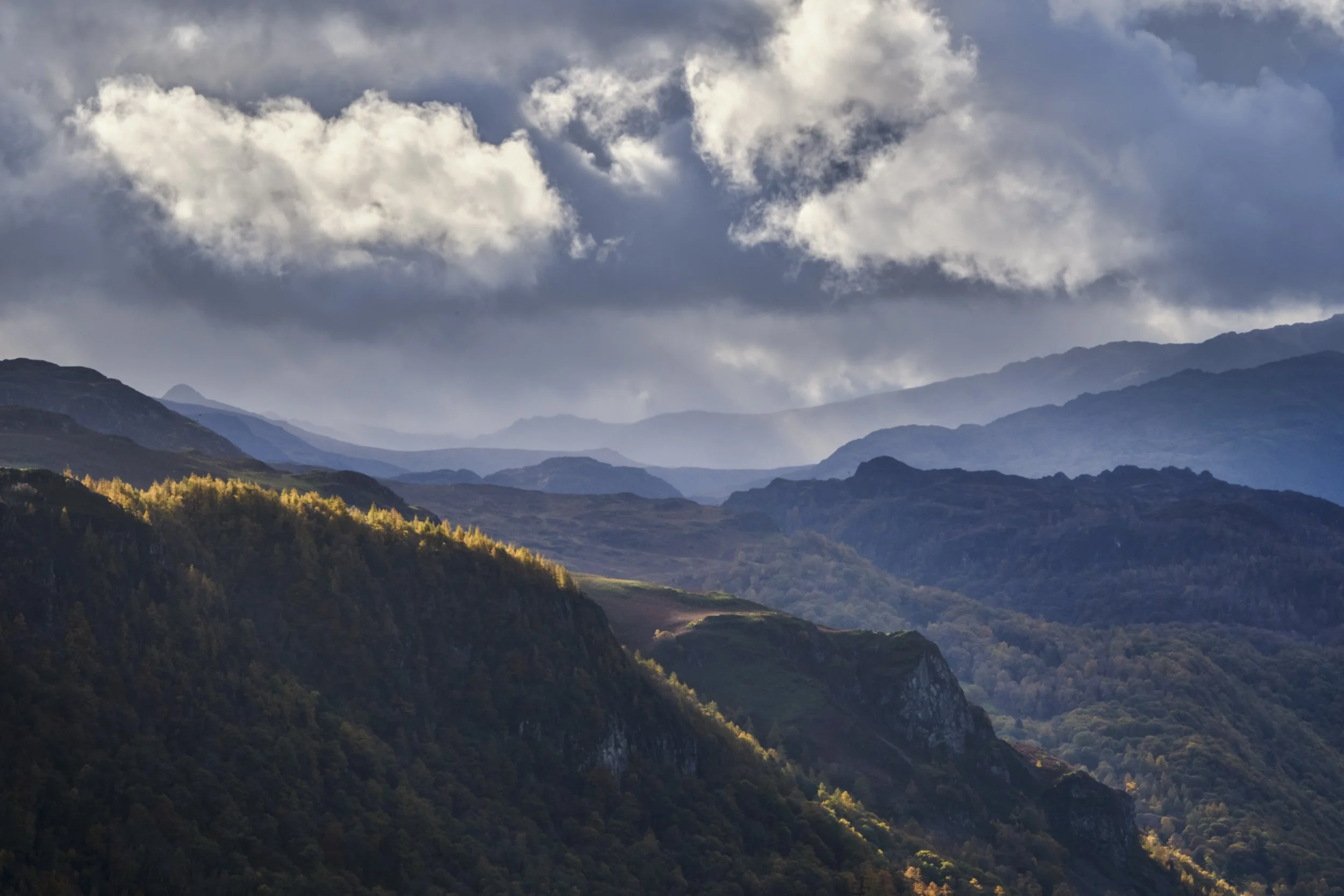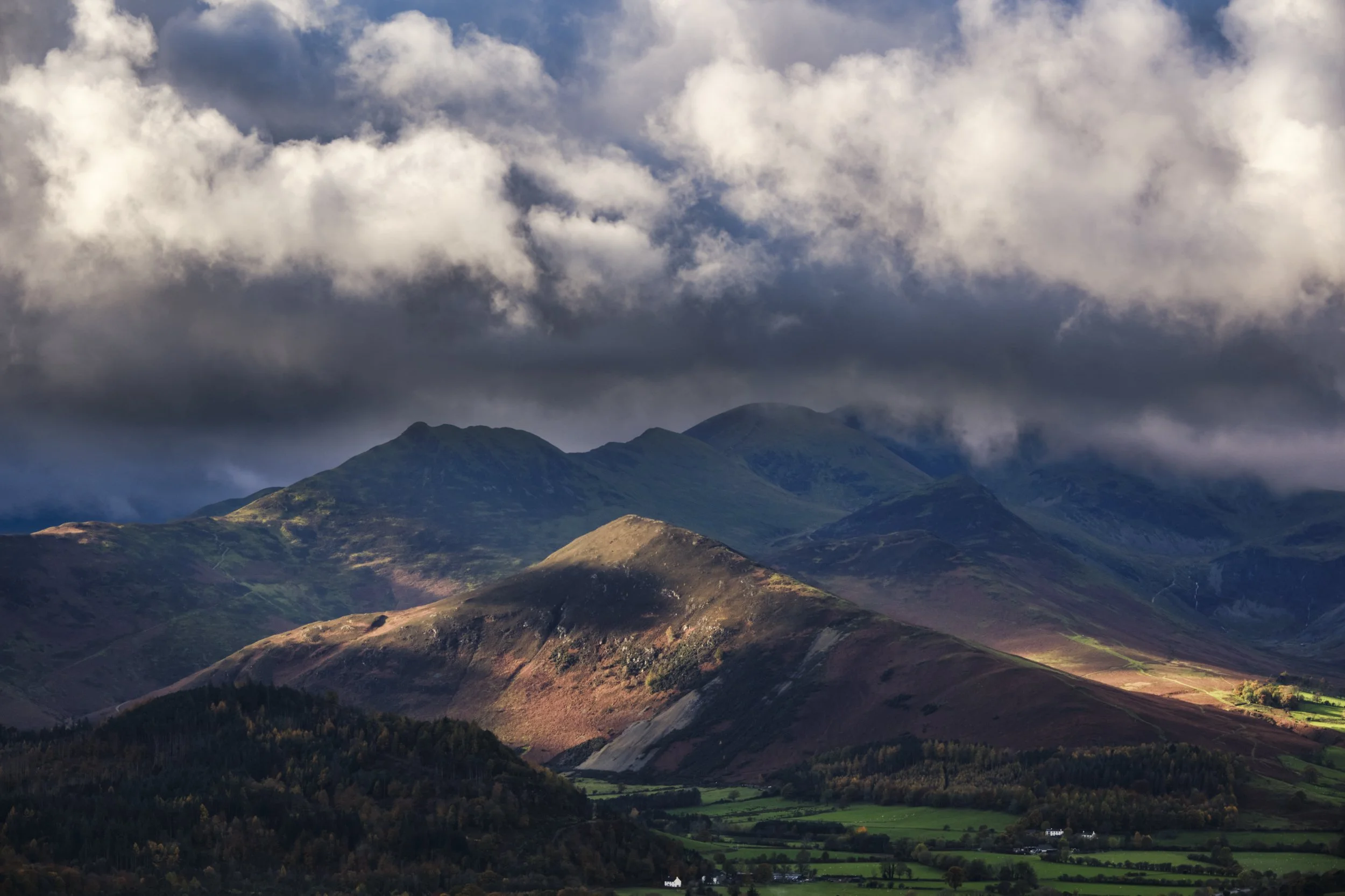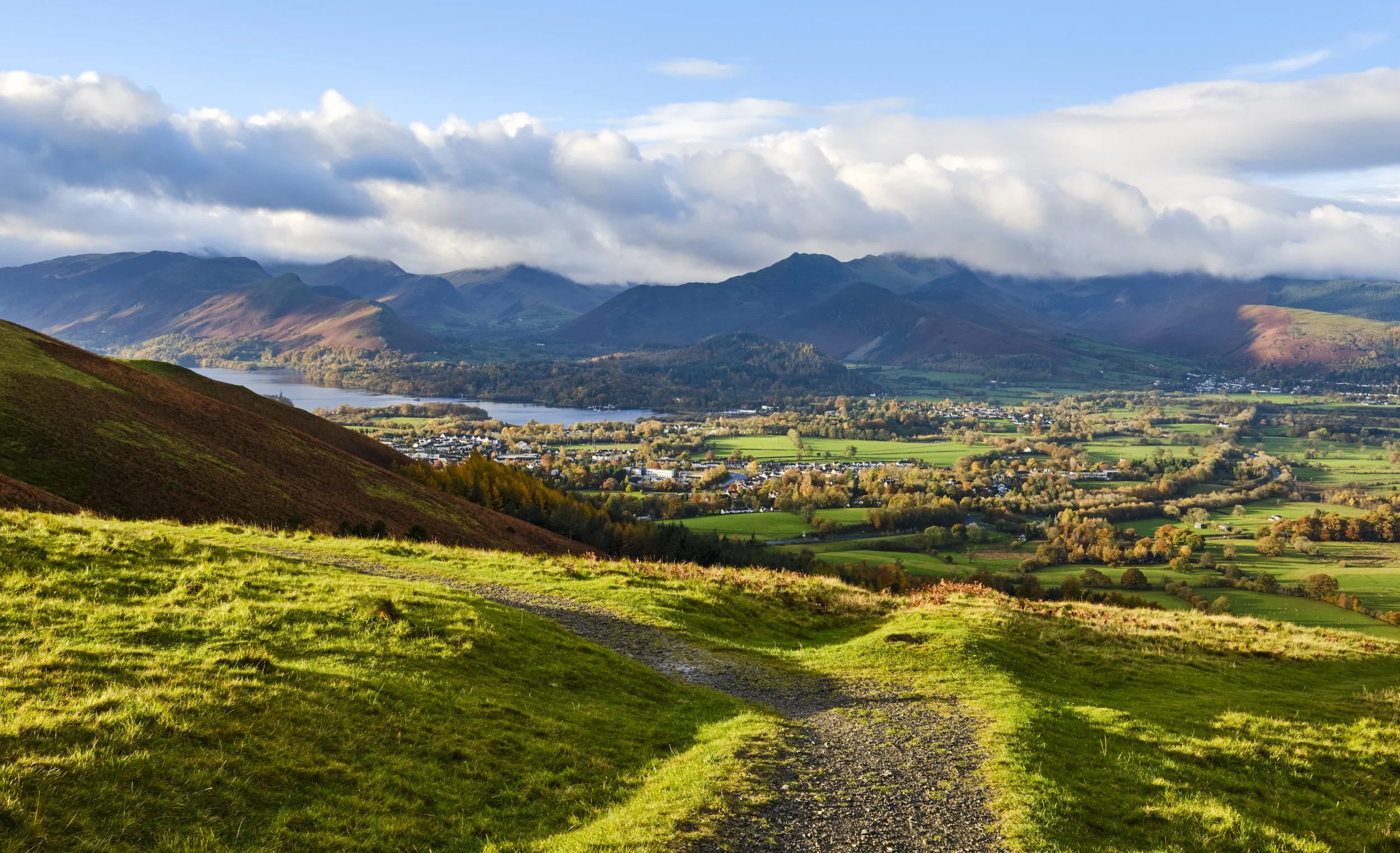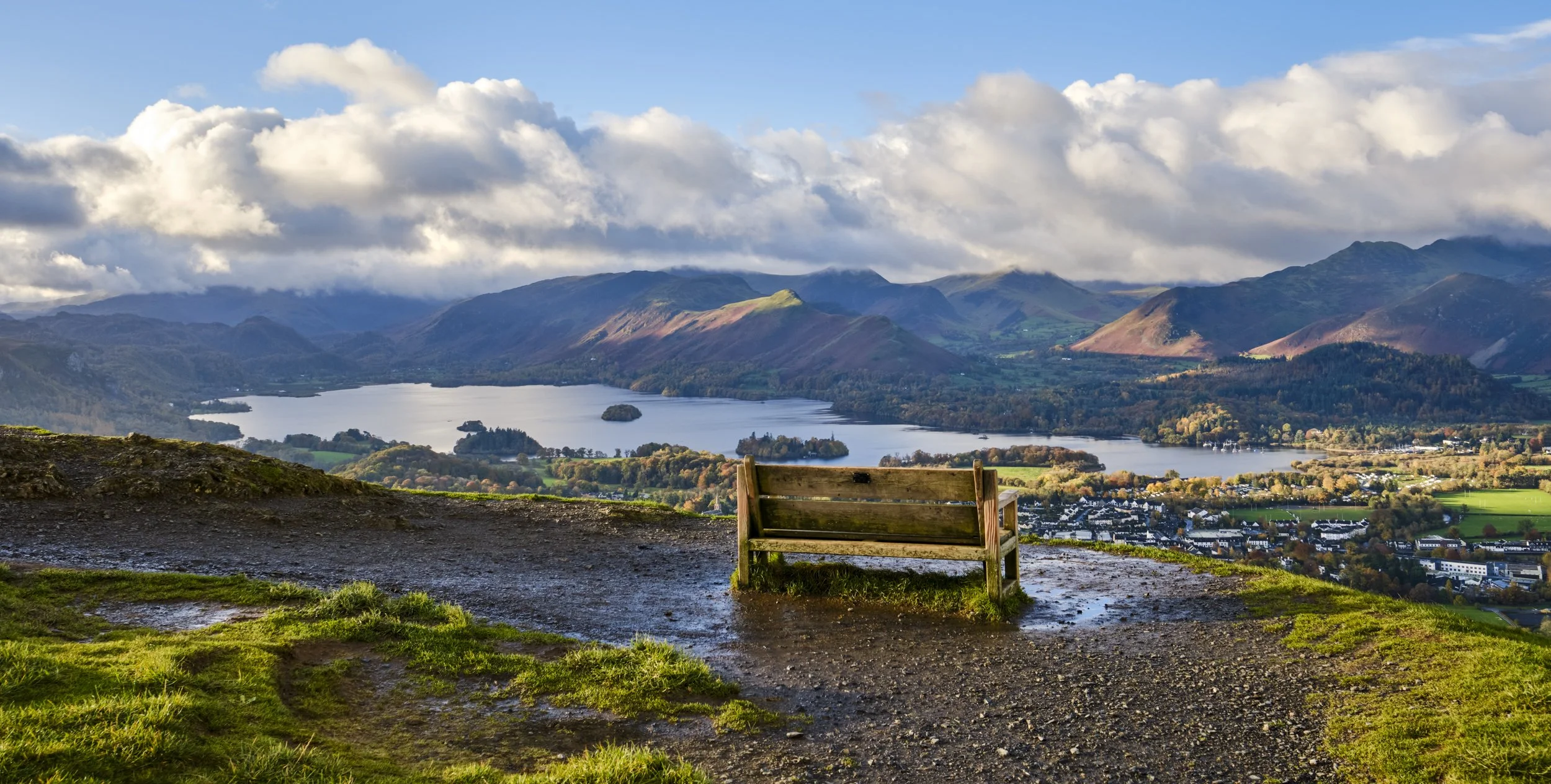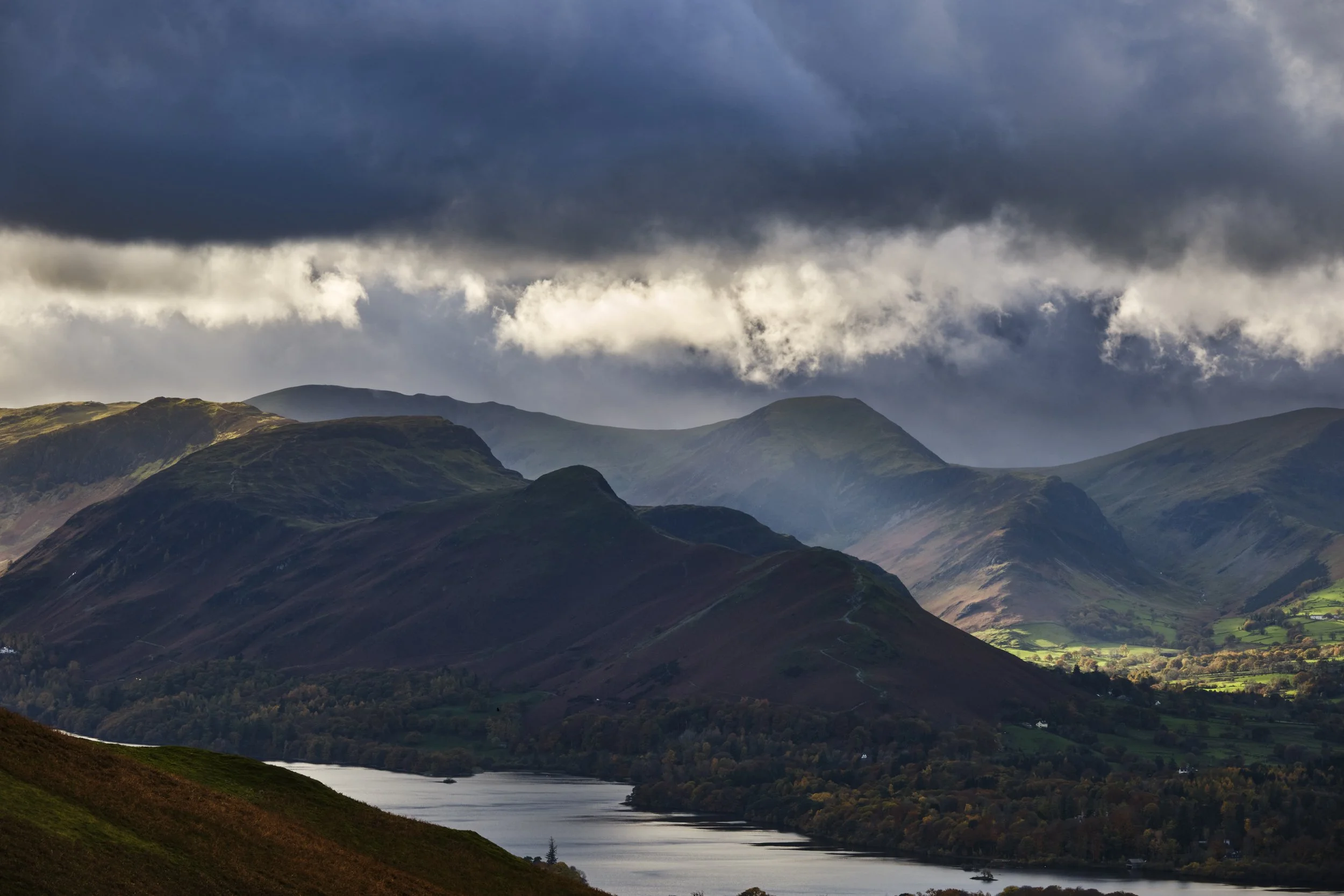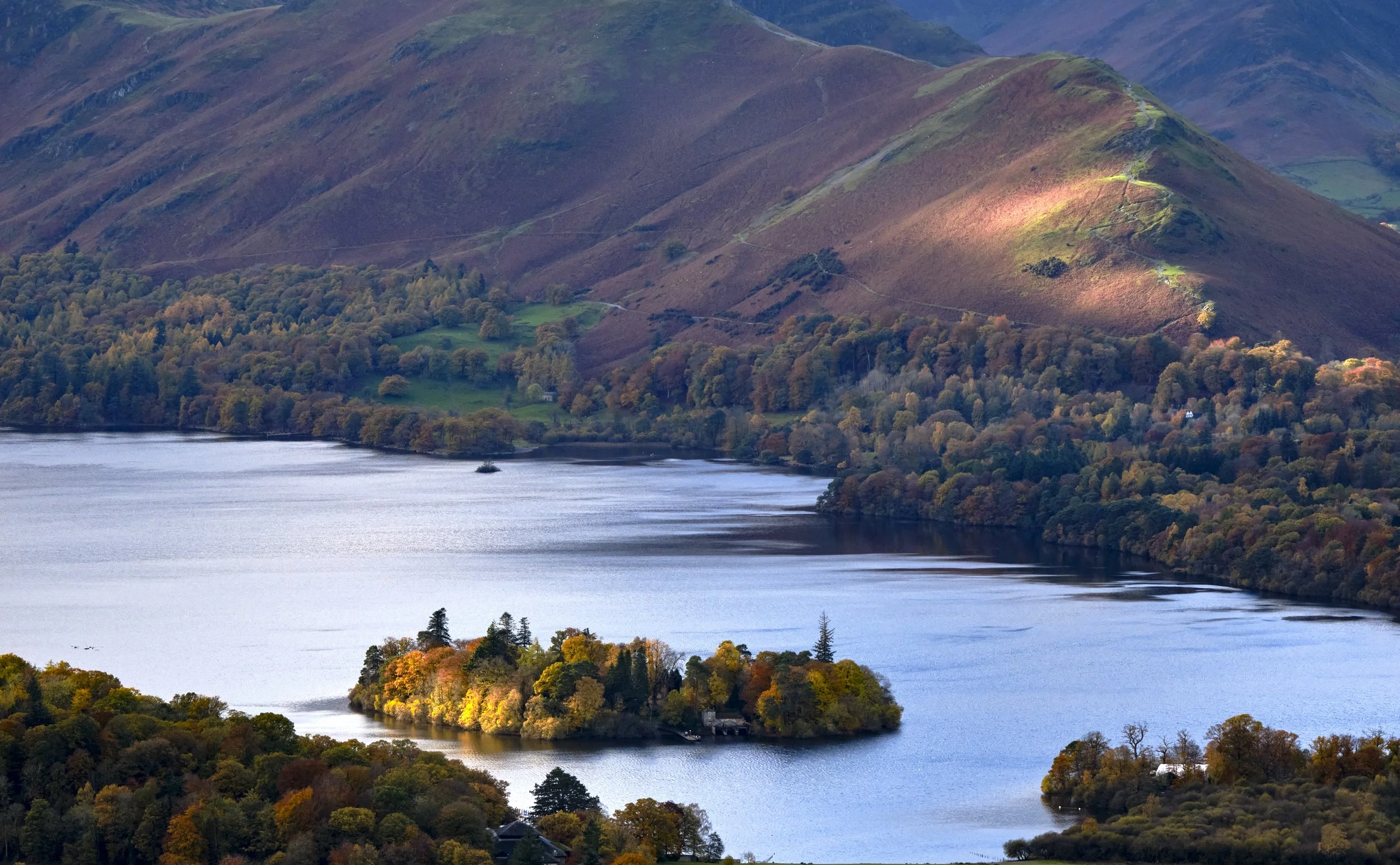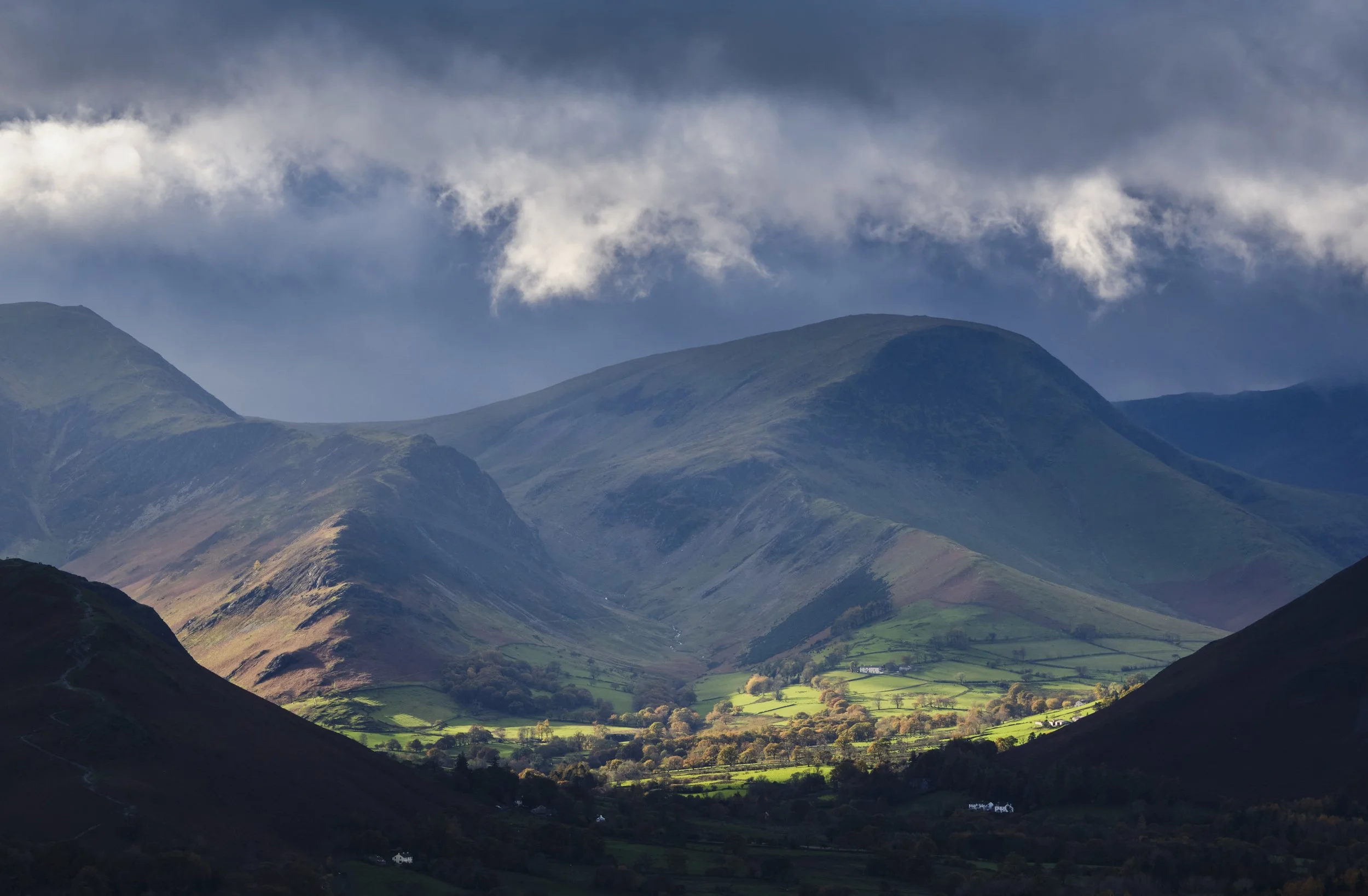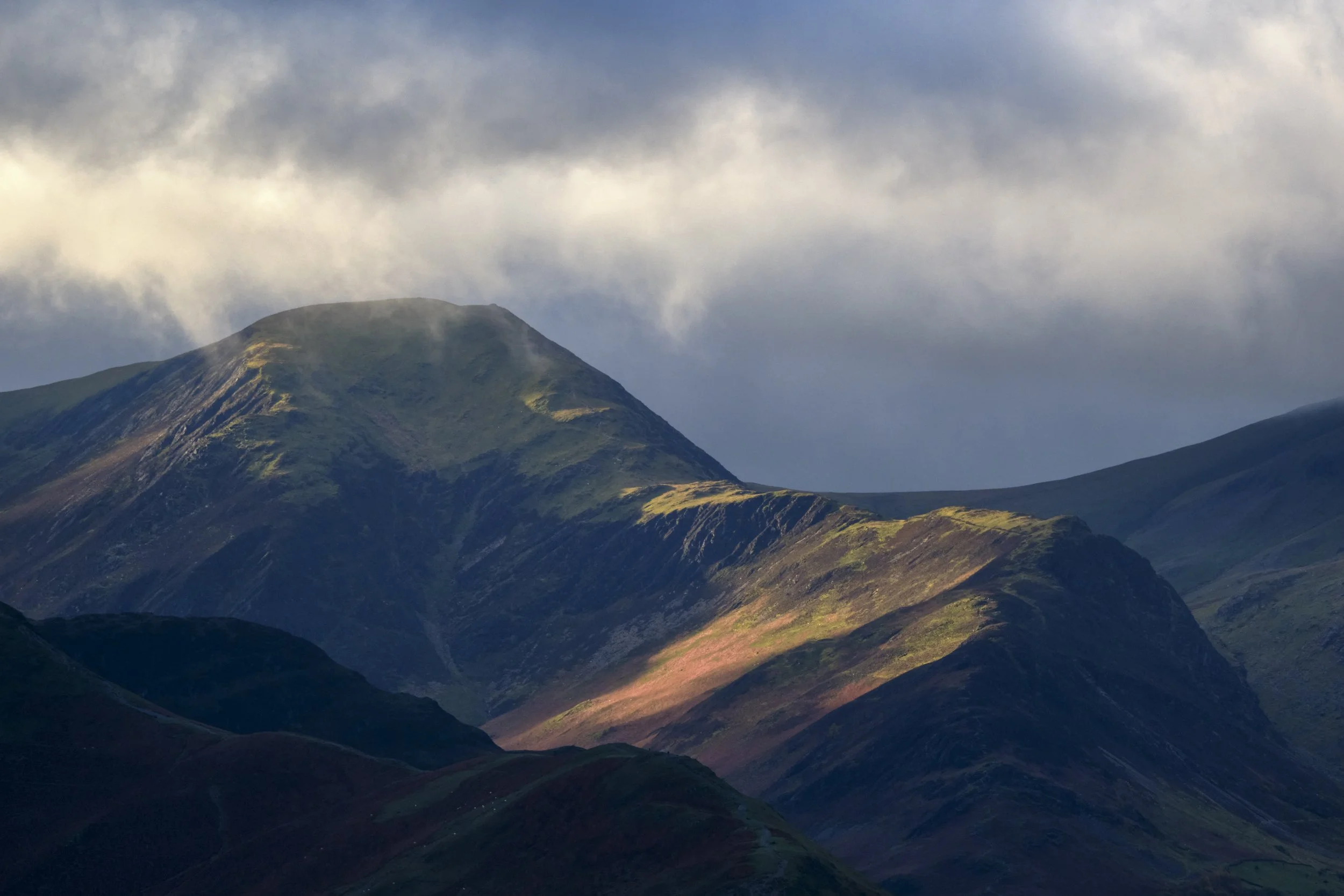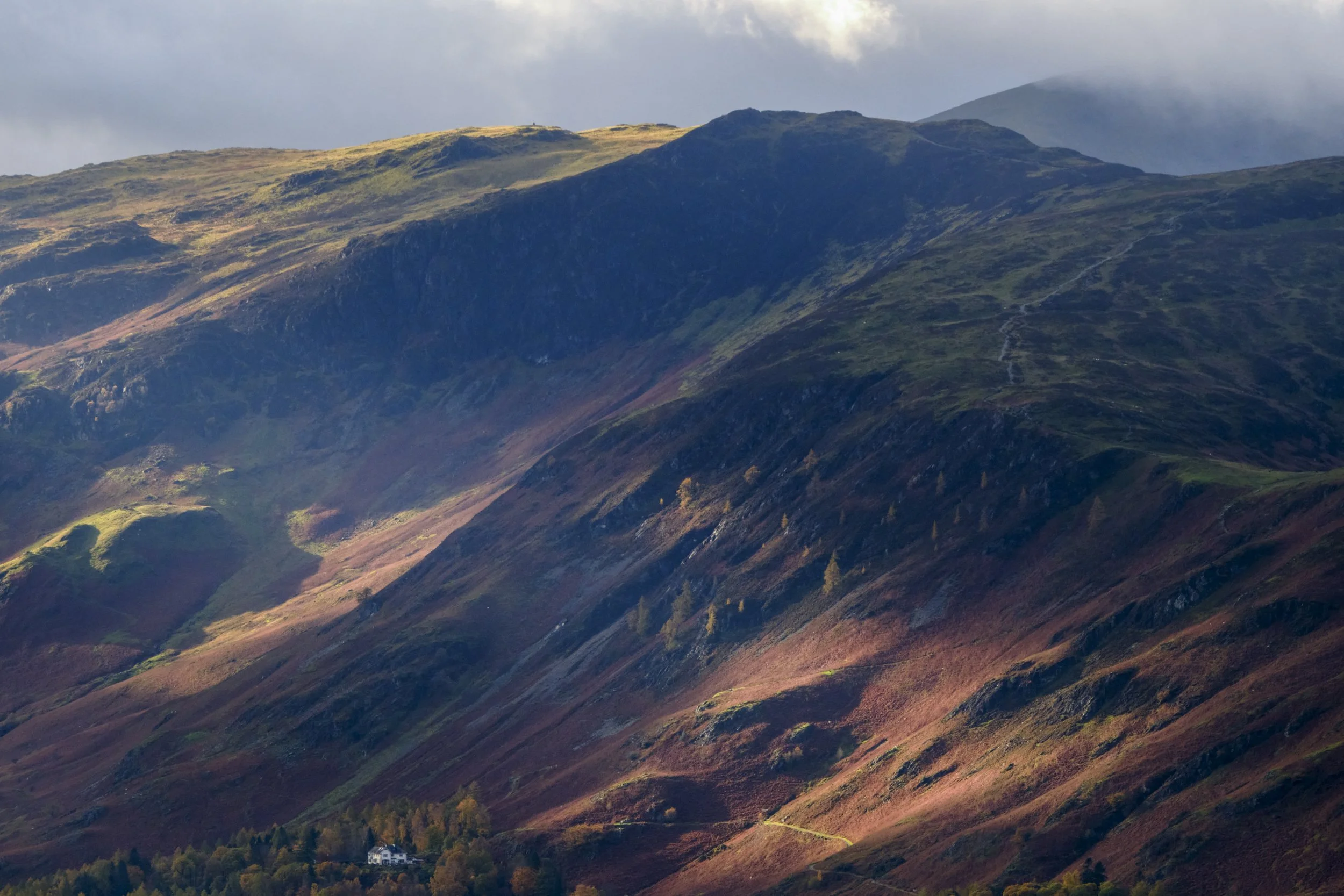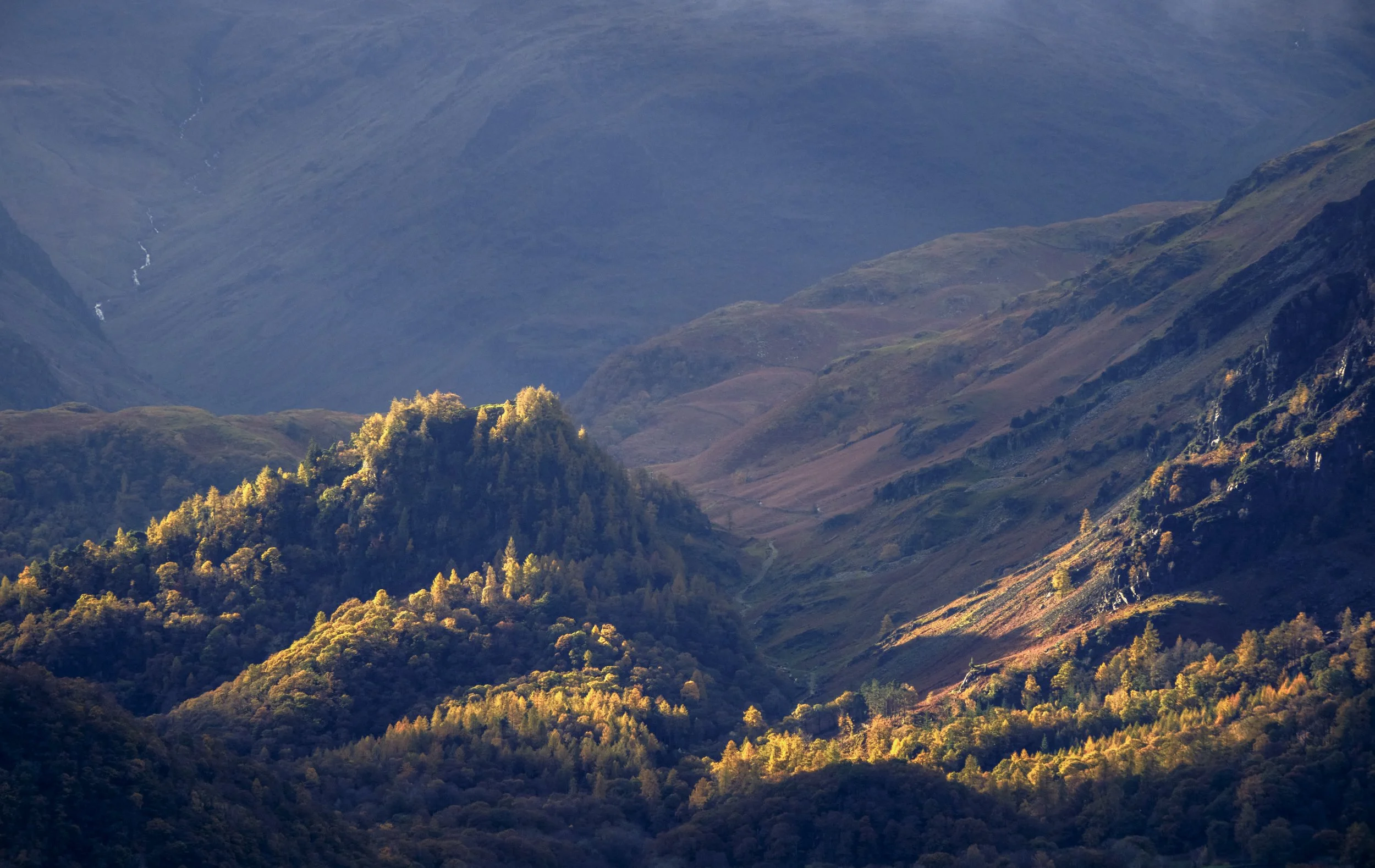Latrigg Fell - epic!
“The fleeting hour of life of those who love the hills is quickly spent, but the hills are eternal. Always there will be the lonely ridge, the dancing beck, the silent forest; always there will be the exhilaration of the summits. These are for the seeking, and those who seek and find while there is still time will be blessed both in mind and body.”
Alfred Wainright
The view over Derwent Water from Latrigg Fell towards Catbells and the Newlands Valley. Landscapes on an epic scale.
Fuji XT5, 70-300 mm lens at 122mm, 1/250 second at F7, ISO 400.
In years gone by, when I was younger and fitter version of myself, I would often pack my camera bag with all the lenses I thought I might need for a photography trip, together with my tripod and all sorts of gubbins such as filters, shutter release cables and so on. I tried to ensure I would have everything I might need to capture the ‘perfect” shot.
When I first got into photography I soaked up all that I could find on the subject, and read that I needed a very sturdy tripod to prevent camera shake. Accordingly, I enthusiastically purchased the strongest and heaviest tripod I could find!! It was certainly sturdy but it weighed an absolute ton.
I still remember staggering back along the tops of the Purbeck cliffs in Dorset one cold and windy March afternoon, after a full day’s photography, lugging all my photography gear and struggling with my unwieldy and ridiculously heavy tripod - switching it from hand to hand, trying in vain to find a more comfortable way to hold it. I recall how exhausted I was, with my eyes streaming from the biting wind. Looking back now, I view the experience fondly, considering it a time when I was cutting my teeth in landscape photography and I can hardly recall the weight of the gear. It’s funny how time changes our perception of experiences.
Looking South East towards Ashness and High Seat on a stormy morning. I was drawn to this shot by the light catching the golden tops of the trees along the ridge line. I also love how the gold of the trees contrasts with the blue tone of the rest of the image.
Fuji XT5, 70-300 mm lens at 127mm, 1/250 second at F7, ISO 200.
Nowadays, in my middle age, I am still willing to put in some hard yards to get to a location but I am grateful for the advent of smaller, lighter, mirrorless cameras and carbon fibre tripods! I am also thankful for the ability to increase the ISO levels in camera, enabling me to capture many views and subjects handheld, which before may have required a tripod in low or failing light. Whilst these developments have made photography easier, in some ways, by allowing one to travel light, it is still a delightful surprise to find a stunning location which is accessible, without feeling as if I’ve run a marathon or scaled Ben Nevis to get there.
Latrigg Fell is absolutely one of these stunning, yet accessible, locations and one I heartily recommend a visit to if you are in the Keswick area.
Looking South West towards Crag Hill and Grisedale Pike. I like the symmetry in the triangular shapes of the peaks and the spots of light offering real contrast to the dark landscape.
Fuji XT5, 70-300 mm lens at 70mm, 1/250 second at F6, ISO 200.
Latrigg Fell rises steeply on the north eastern outskirts of Keswick town. The joy of Latrigg, other than it gives some of the best views over Derwent Water and the surrounding fells, is that if you don’t fancy the walk of about an hour from the town to get to the top, is that you can follow the A591 by car, turning right after the Underscar drive and in 10-15 minutes you can be at the small car park at the top of the road. Do be aware though that there aren’t that many parking spaces and it does get busy.
The circular walk to the top of Latrigg Fell starts to offer a glimpse of the views in store.
Fuji XT5 with 16-55mm lens at 20mm. 1/125 second at F6, ISO 200.
Once parked up you can follow the gravel path that winds around the fell to the grassy top with a very welcoming bench to catch your breath and begin enjoying the sensational views. The final part of the walk up to the bench - about 300 yards - is steeper than the rest but is not too onerous and is well worth the final push.
A bench with a view! What it must be like to sit here on a summer’s evening.
Fuji XT5 with 16-55mm lens at 20mm. 1/125 second at F6, ISO 200.
These photos are from my last visit to Latrigg Fell in November, 2023. I was hoping for some broken cloud but, as I had my breakfast at the b&b, I was concerned it might be too cloudy and wet. Undeterred though, I drove up to the small car park and began the steady climb around the fell on the footpath. It is a lovely walk, with Skiddaw off to your right - in cloud each time I’ve done this walk - and Bassenthwaite beyond.
Catbells in shadow as the sun tries to break through the stormy clouds. I like the dark shadowy shapes of the fells - like slumbering giants.
Fuji XT5, 70-300 mm lens at 70mm, 1/250 second at F6, ISO 200.
The weather looked pretty ominous and I had my brolly with me in case of rain. Putting my camera bag down on the bench, which kept it off the wet ground, I took a few moments to really appreciate the epic views in front of me. Below me lay the town of Keswick and stretching out in front of that lay a sparkling Derwent Water and the majestic fells that surround it, with Newlands Valley ahead and slightly off to my right, Borrowdale Valley straight ahead at the end of the lake and Blencathra and the A66 snaking its way through Threlkeld and the valley to my left. Just stunning.
Sunlight begins to illuminate the Newlands Valley. Side lighting is just so wonderful for throwing the shape of the landscape into relief.
Fuji XT5, 70-300 mm lens at 150mm, 1/250 second at F7, ISO 200.
Two things I had forgotten since my last visit to Latrigg Fell was how windy it can be up there and how cold you can get standing around taking photographs for a protracted period of time. My aim in landscape photography is to follow the changing light and from my vantage point, high up on the fell I was able to pick out spots of light where the sun had broken through the clouds and was picking out parts of the scene. I find this adds real contrast to an image and I have always loved how the interplay between the light and the dark elements in a landscape add drama. Our eyes are always drawn to the brightest parts of a scene and so using light to highlight a particular part of a scene is just one way in which you can influence how the viewer sees the final image, and especially how their eyes will journey around the image in front of them.
Sunlight catches the Autumn Colours on Derwent Isle. Autumn is such a great time to visit the Lakes to catch all the changing colours.
Fuji XT5, 70-300 mm lens at 105mm, 1/250 second at F6, ISO 400.
The next decision was which lens to use. I had packed my Fuji XT5 - I love its resolution, the Fuji film simulations it offers, and how small and light it is and I had a couple of lenses to choose from. I didn’t want to set up my tripod because I wanted to be able to react quickly to the fleeting glimpses of sunlight on the landscape, but I was slightly worried about camera shake, especially as the subjects I was photographing were at quite a distance.
Full steam ahead, as one of the Derwent Water motor launches does its rounds.
Fuji XT5, 70-300 mm lens at 122mm. 1/250 second at F7, ISO 400.
The XT5 has pretty decent image stabilisation and to give myself the best chance of sharp images I set my shutter speed faster than I normally would for landscapes at 1/250. I decided to use my 70-300mm lens which is equivalent on a full frame camera of about 105-450mm. The faster shutter speed would also help keep things sharp at the longer end of the lens range, when picking out smaller parts of the landscape.
Sunlight on Catbells.
Fuji XT5, 70-300 mm lens at 148mm. 1/250 second at F7, ISO 200.
The Autumn colours were wonderful, with the golden leaves on many of the trees being picked out by the sun on Derwent Isle and lighting up the russets and reds along Catbells. In the image above I’ve zoomed in to isolate the part of Catbells lit up by the sun and I like how the winding path is visible as it winds its way up and along the ridge.
Valley of Light, Newlands Valley. The moody weather at last begins to break.
Fuji XT5, 70-300 mm lens at 98mm. 1/250 second at F7, ISO 200.
In these two images I have again used the telephoto lens to zoom into the scene. I ‘m not keen on using a wide angle lens with subjects such as these fells. Whilst wide angle lenses enable you to capture the entirety of the scene, the wide perspective means that objects appear smaller and, in turn, lose some of their majesty. I much prefer to use a mid range zoom to enable the viewer to get a sense of scale and see more of the details in the scene.
Light and shadow play across the ridges and fells.
Fuji XT5, 70-300 mm lens at 200mm. 1/250 second at F7, ISO 320.
The weather continued to slowly improve, with more and more shafts of light breaking through, but I was starting to drive myself a little mad turning this way and that, unsure of what to photograph as there were just so many possibilities popping up now. So I told myself to slow down and not simply blast away at everything, but to only capture images that offered something different to those I had already got. Wanting to capture the drama of the scene I chose to slightly under expose the images, giving greater depth to the shadows.
Looking almost due south towards Borrowdale.
Fuji XT5, 70-300 mm lens at 81mm. 1/250 second at F7, ISO 200.
By now I had been on the fell for about 2 and a half hours and had only moved about 10 feet in all that time, with little direct sunshine on me and a bitingly cold wind. I was getting really cold and the gloves I thought I had packed in my camera bag were not to be found. A very friendly Geordie couple stopped to do some photography for about half an hour and the wife clearly took pity on my by removing her woolly bobble hat and offering it to me to put my hands into for a few minutes! It would have been rude to refuse!! It definitely took the edge off the cold, for a short while, but I made a mental note for next time to bring my gloves and a small flask of coffee!!
On a grand scale. The dimunitive size of the white house on the slopes of Catbells gives and indication of the scale and majesty of the fells surrounding Derwent Water.
Fuji XT5, 70-300 mm lens at 200mm. 1/250 at F7, ISO 400.
I stayed on for about another hour, by which time I was struggling to hold the camera still as I was so cold and the sun had disappeared again. I felt I had captured a good range of images showing different views, at different focal lengths and in differing light. I was content with the images I knew were already in the bag so I returned to my car and back to the b&b to have a look at them. It had been another really good second visit to Latrigg Fell and I know it won’t be my last - I still want to capture some of the views in brighter light, I’d like to shoot a sunset up there and I’d quite like to see how the view looks after sunset, in the blue hour, as the lights of Keswick town begin to come on. They are for another day and maybe another blog.
Great End Crag, Borrowdale. Beautiful light picking up the Autumn Colours on the crags at the southern end of Derwent Water.
Fuji XT5, 70-300 mm lens at 300. 1/250 second at F7, ISO 400.
